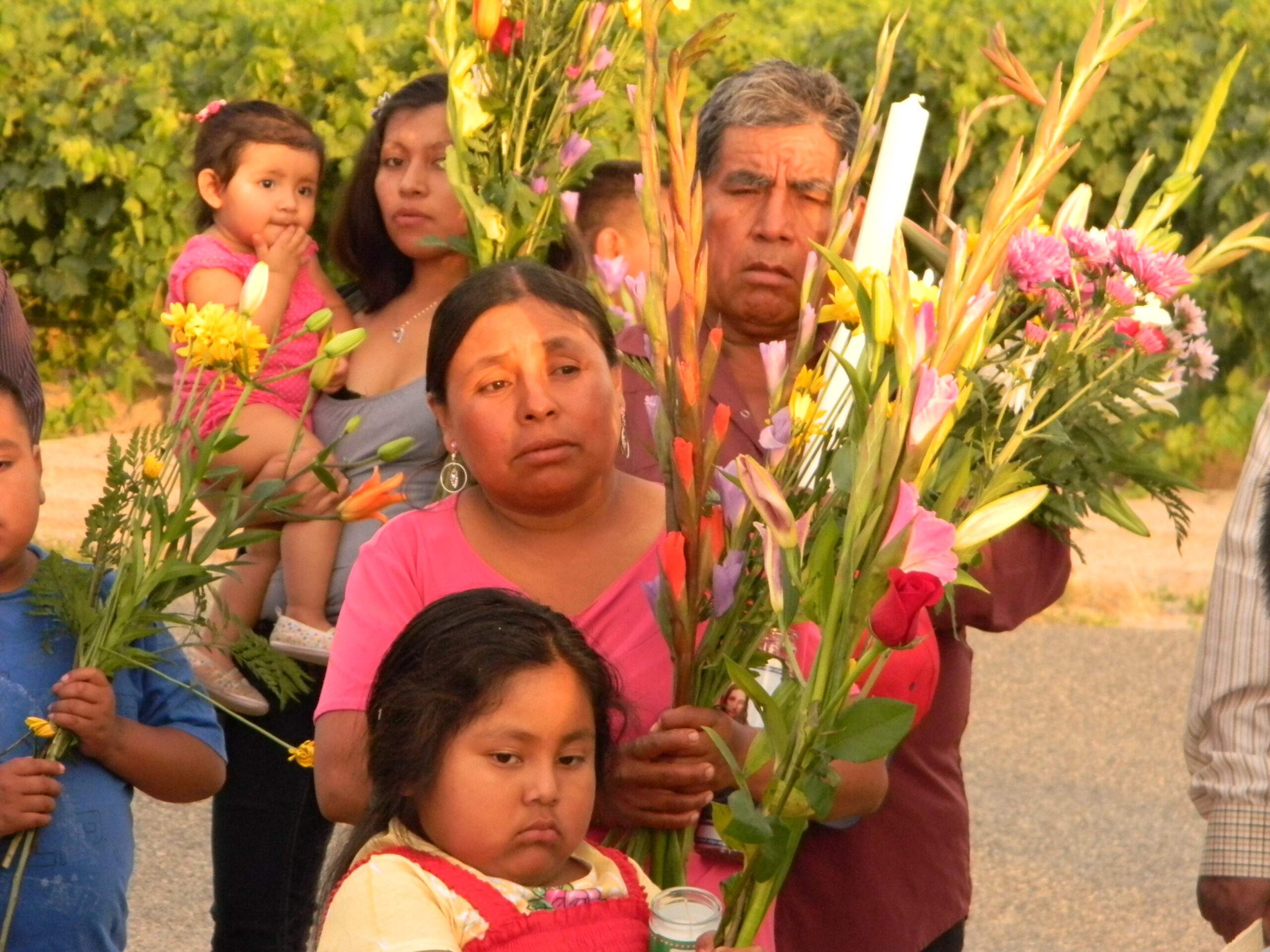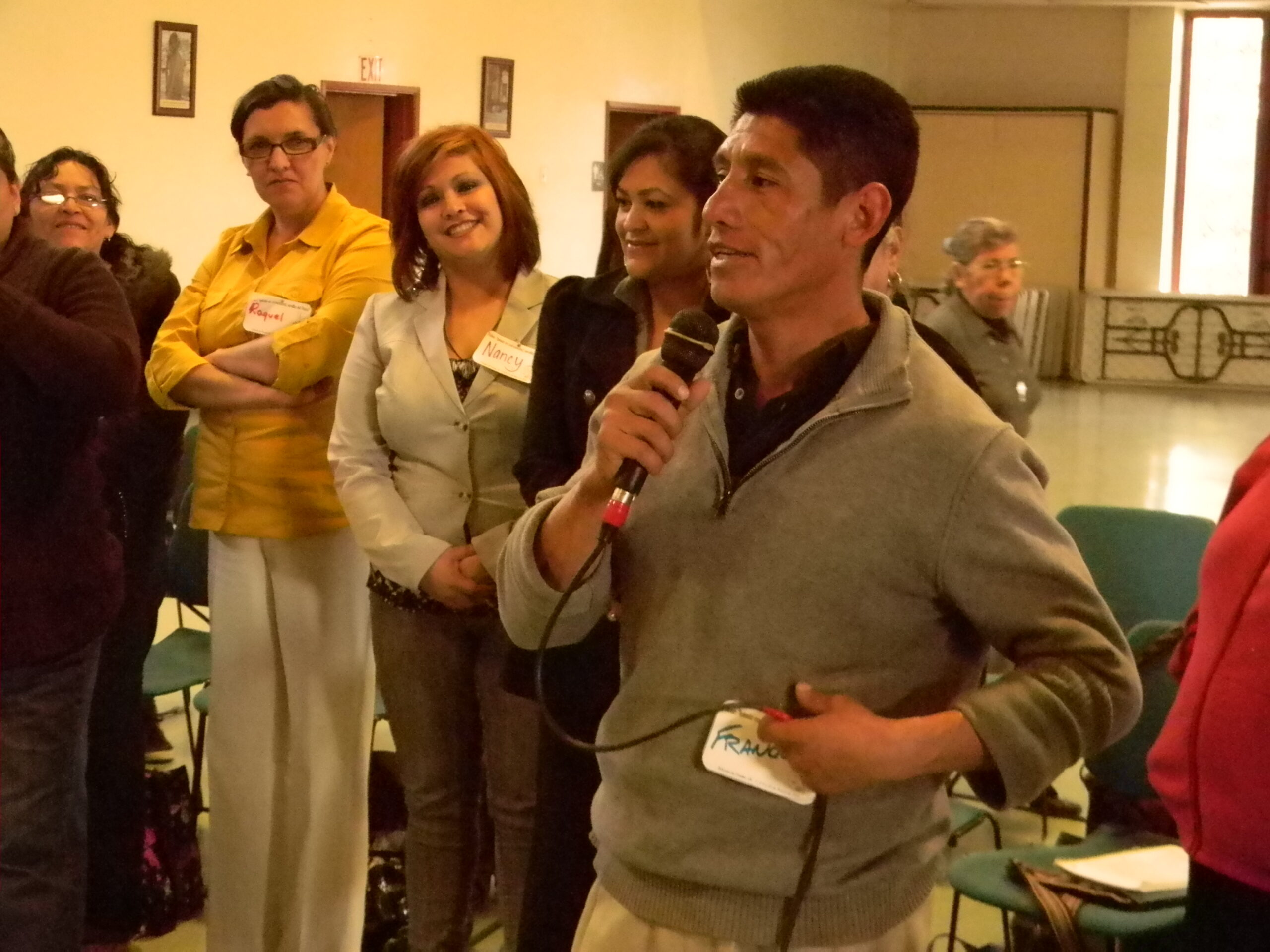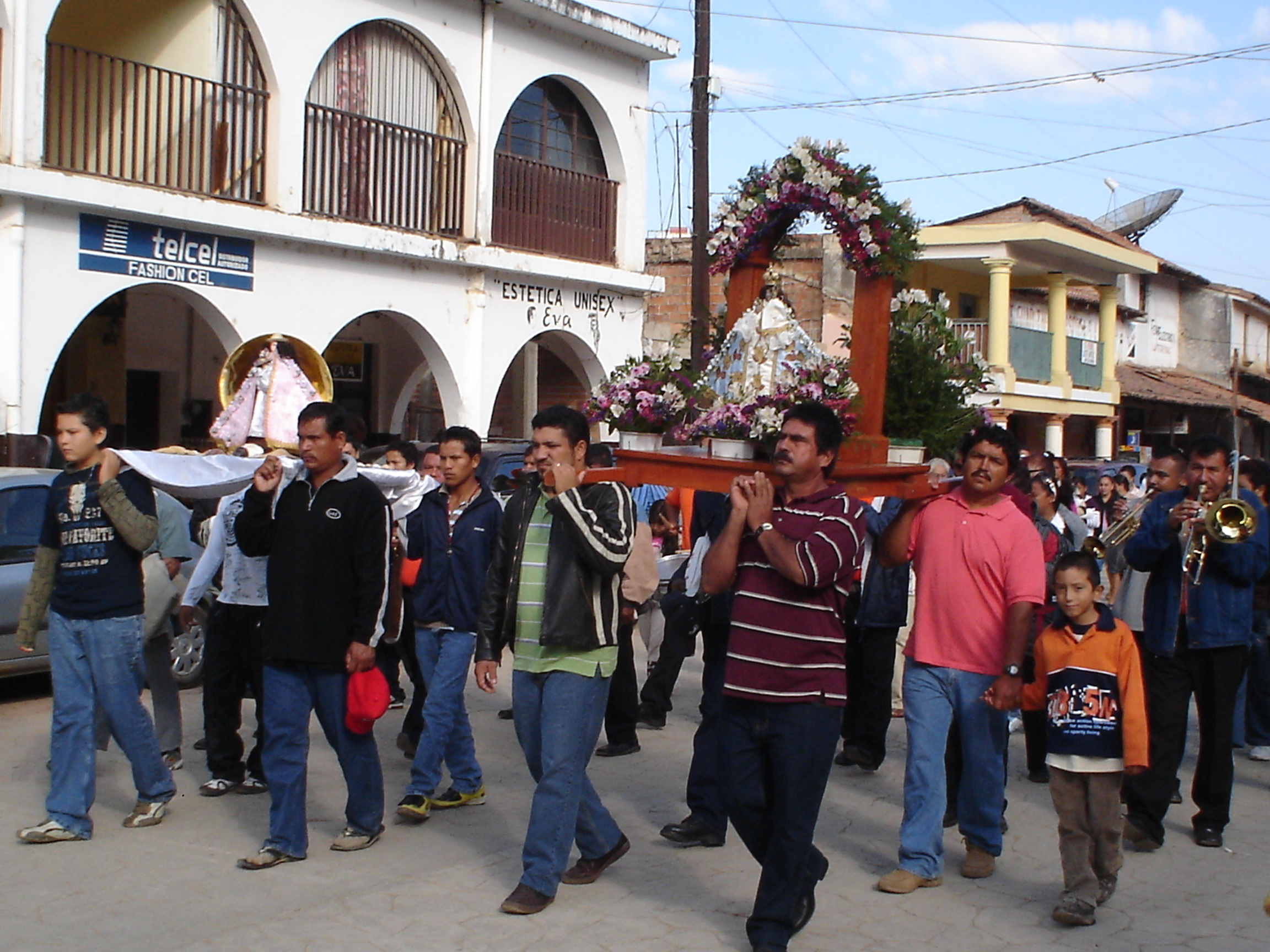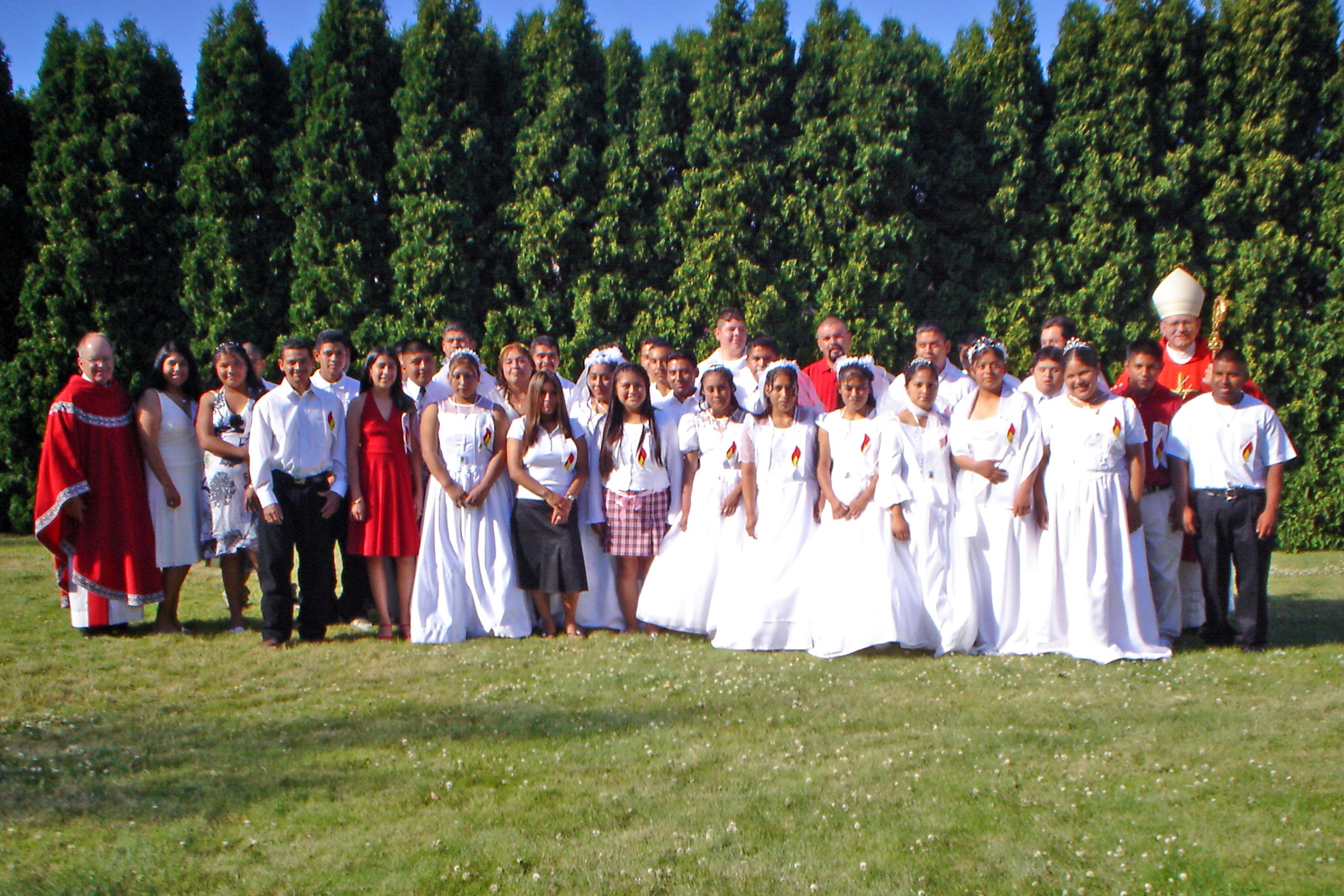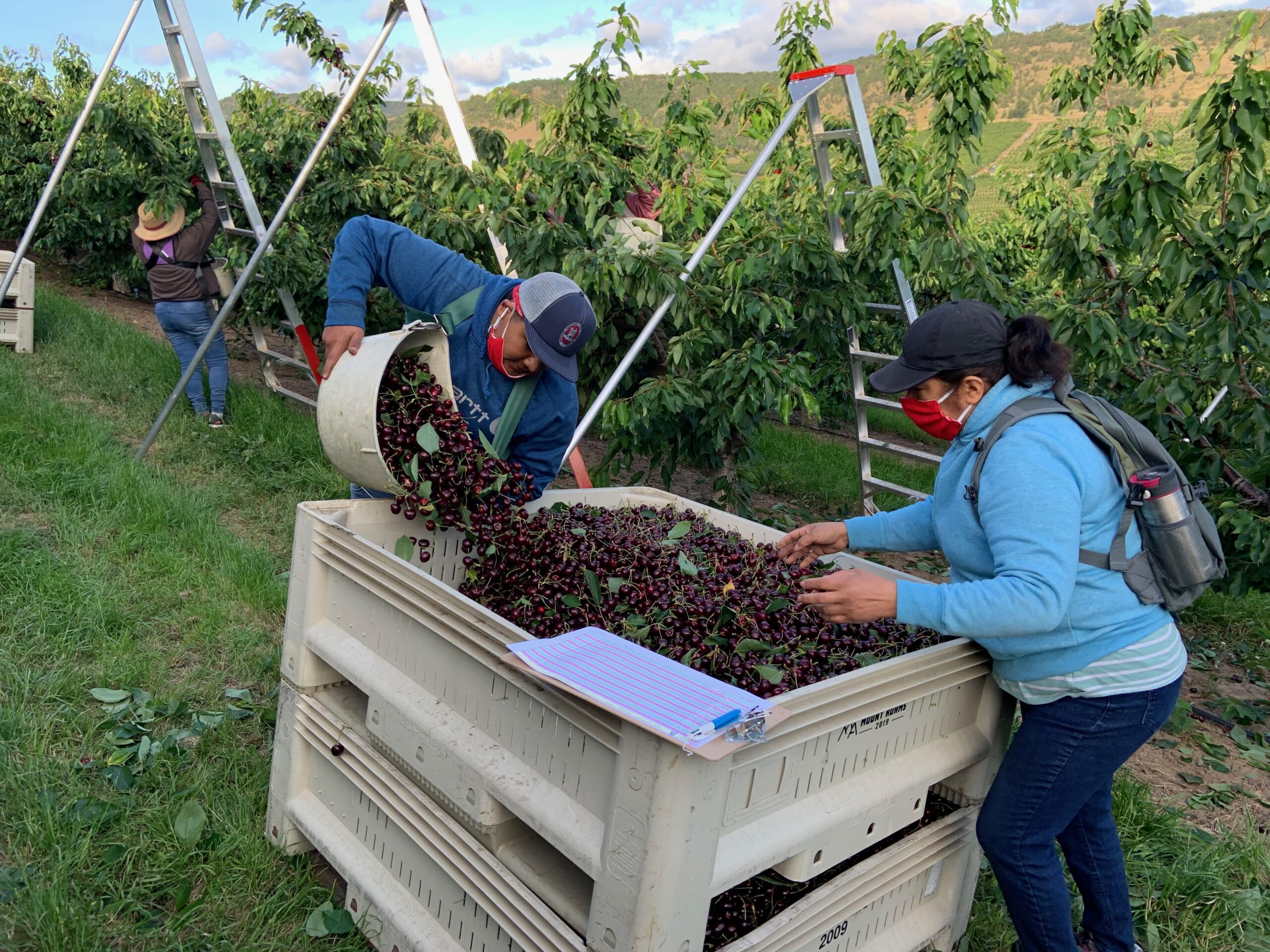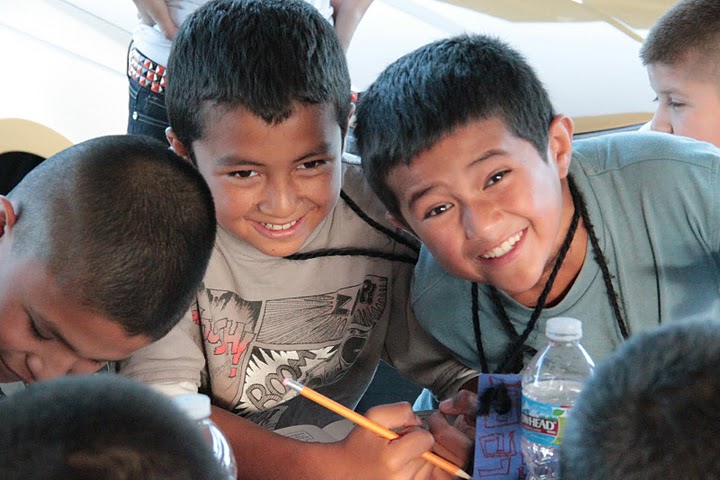Blessed Francis Xavier Seelos, C.SS.R. / Beato Francisco Javier Seelos, C.SS.R.
(I should have posted this story of Blessed Seelos yesterday. His feast day was October 5.)
(Lo siento. Ayer olvide a publicar esta historia de Beato Seelos. Su fiesta era ayer, el 5 de octubre)
Blessed Francis Xavier Seelos
October 5
Pastoral care of immigrants
Looking at the biography of Blessed Francis Xavier Seelos (1819-1867) is like opening a window and breathing fresh air. The life of Father Seelos reflects a modern spirituality, of commitment to immigrants. After leaving his country, at the age of 24, filled with courage and idealism, he joined a handful of Redemptorist missionaries in the United States. What Francis found in America was not romantic at all: a huge population of immigrants living in poverty, sickness, homelessness, and rejection. Father Seelos faced this desolation with hope, not despair. He did not abandon them.
Father Seelos brought love of Christ Jesus day after day to people without hope. Heworked to ease the burdens of so many exploited and marginalized people. Unlike most of the great saints, Francis was not a prominent prelate, mystic, or martyr. He did not write any significant text or stand out for his theology. Rather, his contribution was recorded in the lives of individuals, who received direct and personal help in their daily needs. Father Seelos is a model of simplicity and dedication to the service of God and others. He pointed out the way to God through the daily events of life.
A Redemptorist in desperate times
Francis Seelos served the Catholic Church in the United States during a critical period in its history. By the 1820s, the Church had managed to provide formal, though not yet solid, structures of pastoral care for Catholic immigrants. In 1843, when Francis arrived in New York, Church resources and ministers were overwhelmed by the new waves of immigrants. The Germans were in a great predicament, since few priests spoke their language. Many abandoned the practice of their faith and joined non-Catholic churches. The Catholic bishops of the New World were acutely aware of the urgent pastoral needs of new immigrants, a situation very similar to that of today with Spanish-speaking immigrants in the United States.
At the beginning of 1830, the American bishops made frequent calls to the European Church, asking for help. Among the first to respond was Father Joseph Passerat, CSSR, superior of the Transalpine Redemptorists. In 1832, six members of the Congregation of the Most Holy Redeemer – three priests and three brothers – arrived in America.
Eleven years later, Francis joined the pioneering group of Redemptorist missionaries to dedicate the rest of his life to the pastoral service of the American Church. He worked as parish priest, missionary, seminary teacher, student director, catechist and confessor. Father Seelos had exceptional qualities, especially in regard to confession and preaching, qualities grounded in a robust faith.
Twenty-four years after his arrival in New York, Father Seelos, died of yellow fever in 1867. He was greatly venerated by the people of New Orleans, especially by immigrants. Thousands of people of different races, nationalities and classes crowded the Church of St. Mary of the Assumption in New Orleans, waiting for hours to pray in front of Father Seelos’ coffin. The children and grandchildren of those people still recall the stories of Blessed Seelos and are promoting his cause for canonization. On April 9, 2000, in the Vatican Square, Pope John Paul II beatified Francis Xavier Seelos. He recognized his holiness and prepared the way for canonization. Father Thomas D. Picton, C.SS.R., former Provincial of the Denver Province of the Redemptorists said: “The beatification of Father Seelos is a testament to his life of work for mercy and compassion, which today encourages so many people who feel foreign, remote, marginalized and deprived of rights in the human family. “
The lesson that springs from the life of Francis Xavier Seelos comes from his founding father, St. Alphonsus: “It is a great mistake to say that God does not want us all to be saints. God wants us all to attain holiness, and each according to his state of life: religious as religious, lay people as laymen, priest as priest, married as married, merchant as merchant, soldier as soldier, and so on.” Through his vocation to the priesthood and religious life, Francis Xavier Seelos found his deepest treasures: joy and holiness.
His life is a story of holiness
Francis Xavier Seelos was born on January 11, 1819 in Füssen, in the Catholic region of Bavaria (Germany). He was baptized the same day in the parish church of San Mang. The desire to be a priest came very early to him, inspired by the Gospel. In 1842, after finishing his studies of philosophy he entered the diocesan seminary. After meeting Redemptorist missionaries, he decided to join this congregation and serve German-speaking immigrants in the United States. He was received in the Congregation of Redemptorist Missionaries on November 22, 1842. The following year he sailed for the United States from Le Havre, France, to New York on April 20, 1843.
On December 22, 1844, after completing his novitiate and completing his studies in theology, Seelos was ordained a priest at St. James’s Redemptorist Church in Baltimore, Maryland. Following his ordination, he worked for nine years in the parish of St. Filomena in Pittsburgh, Pennsylvania, first as vicar with St. John N. Neumann (the first saint of the United States of America), superior of the Redemptorist religious community, and later, for another three years, as pastor and being himself Superior of the community. During this time, he held the position of Master of Novices. Along with St. John Neumann, his main ministry was to preach missions in different towns. Seelos comments on his relationship with Neumann: “He introduced me into the active life,” and “directed me as spiritual director and confessor.” His availability and innate kindness, his attention to the needs of the faithful soon made Fr. Seelos a well-known figure as an expert confessor and spiritual director to the point that many came to him from other nearby cities.
Faithful to the Redemptorist charism, his lifestyle was modest lifestyle and expressed in simple words. The theme of his preaching and homilies were rich in biblical content and easy to understand even by the simplest people. A constant of his pastoral passion was his commitment to dedicate himself to the formation of the faith of the little ones. He saw ministry to the children and to the most needy to be fundamental to the inner growth of the parish Christian community. fundamental to the inner growth of the parish Christian community.
In 1854 he was transferred from Pittsburgh to Baltimore and, later, in 1857, to Cumberland. In 1862 he served as pastor in Annapolis, and directed the formation of future Redemptorists as Prefect of Redemptorist Theology Students. He was kind and cheerful, always attentive to the needs of his students and to their academic training. He was dedicated above all to instilling in these future Redemptorist missionaries enthusiasm, a spirit of sacrifice and an apostolic zeal for the spiritual and temporal good of the people.
In 1860 he was presented as a candidate for Bishop of Pittsburgh. For Father Seelos, this was not good news, and he prayed to be released from that candidacy. Pope Pius IX released him from the responsibility. From 1863 to 1866, Father Seelos dedicated himself to the life of a traveling missionary preaching in English and German in the states of Connecticut, Illinois, Michigan, New Jersey, New York, Ohio, Pennsylvania, Rhode Island and Wisconsin.
After a brief period of parish ministry in Detroit, Michigan, in 1866 he was assigned to the Redemptorist community of New Orleans, Louisiana. He served as pastor of St. Mary of the Assumption Church. He was always available and sensitive to the needs of the poorest and most abandoned, especially the immigrant and the sick.
But in the plans of God his ministry in New Orleans was brief. In September, exhausted after having visited and cared for the victims of an epidemic of yellow fever, he contracted the terrible disease. After several weeks of illness, suffering with holy resignation, he passed into eternal life on October 4, 1867 at the age of 48 years and 9 months.
His Holiness Pope John Paul II proclaimed Father Seelos Beatus in St. Peter’s Square on April 9 of the Solemn Jubilee Year 2000.
Prayer for immigrants in the United States
O God, Blessed Francis Xavier Seelos was himself an immigrant to the United States. In his ministry, he served immigrants from all over the world. Through his intercession grant mercy and compassion to all migrants and immigrants who have entered the United States in search of liberty and opportunity. Protect in a special way the children of immigrants, who are vulnerable to exploitation and the abuse of others. May the example of Blessed Francis Seelos inspire people of the United States to have compassion for the most vulnerable of the world. We make this prayer, heavenly Father, through our Lord Jesus Christ, who lives and reigns with you in the unity of the Holy Spirit, one God forever and ever. Amen.
Beato Francisco Javier Seelos
5 de octubre
La actualidad de la atención pastoral a los inmigrantes
El asomarse a la biografía del beato Francisco Javier Seelos (1819-1867) es como abrir una ventana y respirar aire fresco. La vida del padre Seelos refleja una espiritualidad moderna, de entrega por los inmigrantes. Tras dejar con valentía e idealismo su patria alemana con sólo 24 años, se une en los Estados Unidos a un puñado de misioneros redentoristas. Lo que encontró Francisco en América no resultó nada romántico: una enorme población de inmigrantes sumidos en la pobreza, en la enfermedad, sin hogar y rechazados. El padre Seelos, en cambio, ante tal desolación, no se desanimó ni les abandonó.
El padre Seelos día tras día llevaba la ilusión y el amor de Cristo Jesús a los hombres sin esperanza. Trabajaba para aliviar las cargas de tantas personas explotadas y marginadas. A diferencia de la mayoría de los grandes santos, Francisco no fue un destacado prelado, místico o mártir. No escribió ningún texto significativo ni sobresalió por su teología. Más bien, su aportación quedó grabada en las personas individuales, a las que prestó ayuda directa y personal en sus necesidades diarias. El padre Seelos es modelo de sencillez y de entrega al servicio de Dios y de los demás, a los que les señalaba el camino hacia Dios a través de los acontecimientos diarios de la vida.
Redentorista en tiempos críticos
Francisco Seelos sirvió a la Iglesia Católica en los Estados Unidos de América durante un periodo crítico de su historia. Por los años 1820, la Iglesia había conseguido proveer de unas estructuras formales, aunque aún no sólidas, de atención pastoral a los inmigrantes católicos. Pero en 1843, cuando llegó Francisco a Nueva York, los recursos y los ministros de la Iglesia se sentían desbordados ante las nuevas olas de inmigrantes. Los alemanes, en particular, se encontraban en un gran aprieto, ya que pocos sacerdotes hablaban su idioma. Y, por eso, muchos abandonaban la práctica de su fe y se unían a las otras iglesias no católicas. Los obispos católicos del Nuevo Mundo eran perfectamente conscientes de las urgentes necesidades pastorales de los nuevos inmigrantes, (situación muy similar a la actual con los inmigrantes de habla española en los Estados Unidos).
A comienzos de 1830, los obispos americanos hacían frecuentes llamadas a la Iglesia europea, pidiendo ayuda. De los primeros en responder fue el padre José Passerat CSSR, superior de los redentoristas trasalpinos. En 1832, seis miembros de la Congregación del Santísimo Redentor -tres sacerdotes y tres hermanos- llegaron a América.
Once años más tarde, Francisco se unió al pionero grupo de misioneros redentoristas para dedicar el resto de su vida al servicio pastoral de la Iglesia norteamericana. Trabajó como párroco, misionero, profesor del seminario, director de estudiantes, catequista y confesor. El padre Seelos tenía unas cualidades excepcionales, especialmente en lo referente a la confesión y a la predicación, cualidades cimentadas en una fe robusta.
Veinte cuatro años más tarde de su llegada a Nueva York, el padre Seelos moría a causa de la fiebre amarilla con gran sentimiento de la población, especialmente de los inmigrantes. Miles de personas de diferentes razas, nacionalidades y clases abarrotaban la Iglesia de Santa María de la Asunción en Nueva Orleáns, esperando horas enteras para orar delante del ataúd del padre Seelos. Recuerdan aún el hecho los hijos y nietos de aquellas personas, los cuales son los que ahora están promoviendo la causa de canonización. El 9 de abril del 2000, en la plaza del Vaticano, el Papa Juan Pablo II beatificó a Francisco Javier Seelos. Reconocía así su santidad y preparaba el camino para la eventual canonización. El padre redentorista Tomás D. Picton, superior viceprovincial de New Orleans, señalaba: “La beatificación del padre Seelos es un testamento a su vida de trabajo por la misericordia y compasión, que alienta hoy a tantas personas que se sienten extranjeras, alejadas, marginadas y privadas de derechos en la nueva comunidad de la familia humana”.
La lección que brota de la vida de Francisco Javier Seelos procede de su padre fundador, San Alfonso: “Es un gran error decir que Dios no quiere que todos seamos santos. Dios quiere que todos alcancemos la santidad, y cada uno según su estado de vida: los religiosos como religiosos, los laicos como laicos, el sacerdote como sacerdote, la persona casada como casada, el mercader como mercader, el soldado como soldado, y así sucesivamente, cada uno según su estado de vida”. A través de su vocación al sacerdocio y a la vida religiosa, Francisco Javier Seelos encontró sus más profundos tesoros: alegría y santidad.
La vida como historia de santidad
Francisco Xavier Seelos nace el 11 de enero de 1819 en Füssen, en la católica región de Baviera (Alemania). Es bautizado el mismo día en la iglesia parroquial de san Mang. El deseo de ser sacerdote es muy temprano en él, admirado por las cosas del Evangelio. En 1842, tras concluir sus estudios de filosofía entra en el seminario diocesano.
Después de encontrarse con los misioneros Redentoristas, decide ingresar en esta congregación y ponerse al servicio de los inmigrantes de lengua alemana en Estados Unidos. Es recibido en la Congregación de los Misioneros Redentoristas el 22 de noviembre de 1842. Al año siguiente zarpará hacia Estados Unidos desde Le Havre, Francia, para llegar a New York el 20 de abril de 1843.
El 22 de diciembre de 1844, terminado el noviciado y completados sus estudios de teología, Seelos es ordenado sacerdote en la iglesia redentorista de St. James en Baltimore, Maryland, USA. Tras su ordenación, trabaja durante nueve años en la parroquia de Santa Filomena en Pittsburgh, Pennsylvania, primero en calidad de vicepárroco con san Juan N. Neumann (el primer santo de los Estados Unidos de América), superior de la comunidad religiosa redentorista, y, más tarde, durante otros tres años, como párroco siendo ya él mismo Superior de la comunidad. Durante este tiempo, ocupa también el cargo de Maestro de Novicios. Con san Juan Neumann su principal ocupación era predicar misiones en diferentes poblaciones. Seelos comenta así su relación con Neumann: “Me ha introducido en la vida activa”, y “me ha dirigido como director espiritual y confesor”. Su disponibilidad e innata amabilidad, su atención a las necesidades de los fieles hacen pronto de él una figura bien conocida como confesor experto y director espiritual hasta el punto de que vienen a él también de otras ciudades cercanas.
Fiel al carisma redentorista, lleva un estilo de vida modesto y se expresa con palabras sencillas. La temática de sus predicaciones y homilías, ricas en contenido bíblico, es fácil de entender incluso por la gente más sencilla. Una constante de su pastoral es su empeño por dedicarse a la formación de la fe de los pequeños. No solamente apoya este ministerio, sino que lo cree fundamental para el crecimiento interior de la comunidad cristiana de la parroquia.
En 1854 es trasladado de Pittsburgh a Baltimore y, más tarde, en 1857, a Cumberland. En 1862 lo vemos ya en Annapolis, siempre ocupado en el servicio parroquial y entregado a la formación de los futuros Redentoristas en calidad de Prefecto de Estudiantes Teólogos Redentoristas. También aquí, es fiel a su imagen y continúa siendo pastor, amable y alegre, siempre atento a las necesidades de sus estudiantes y atento también a su formación académica. Se dedica sobre todo a infundir en estos futuros misioneros redentoristas el entusiasmo, el espíritu de sacrificio y el celo apostólico por el bien espiritual y temporal de la gente.
En 1860 es presentado como candidato a Obispo de Pittsburgh. Para el Padre Seelos no era una buena noticia, y pide a Dios y a quien puede que se le libere de esa candidatura. El Papa Pío IX lo dispensa de esta pesada responsabilidad. El Padre Seelos se dedicará del 1863 al 1866 a la vida de misionero itinerante predicando en inglés y en alemán en los estados de Connecticut, Illinois, Michigan, Missouri, New Jersey, New York, Ohio, Pennsylvania, Rhode Island y Wisconsin.
Tras un breve período de ministerio parroquial en Detroit, Michigan, en 1866 es destinado a la comunidad redentorista de New Orleans, Louisiana. También aquí ejerce de párroco de la iglesia de la Asunción de Santa Maria. Es para los fieles un párroco alegre, disponible y singularmente sensible a las necesidades de los más pobres y de los más abandonados. Pero en los planes de Dios este ministerio en New Orleans está llamado a durar poco. En el mes de septiembre, exhausto tras haber visitado y cuidado a las víctimas de una epidemia de fiebre amarilla, contrae la terrible enfermedad. Tras varias semanas de enfermedad, que padece con santa resignación, pasa a la vida eterna el 4 de octubre de 1867 a la edad de 48 años y 9 meses.
Su Santidad el Papa Juan Pablo II proclamó al Padre Seelos Beato en la Plaza de San Pedro, el 9 abril del Solemne Año Jubilar 2000.
Oración por los inmigrantes en los EE.UU.
O Dios, beato Francisco Javier Seelos era un inmigrante a los Estados Unidos. En su ministerio sirvió a los inmigrantes de todo el mundo. A través de su intercesión, concede misericordia y compasión a todos los migrantes e inmigrantes que han entrado los Estados Unidos en busca de libertad y oportunidad. Proteja de manera especial los hijos de los inmigrantes, que son vulnerables a explotación y el abuso de los demás. Que el ejemplo de beato Francisco Seelos inspire a la gente de los Estados Unidos a tener compasión por los más vulnerables del mundo. Ofrecemos esta oración por Cristo, nuestro Señor. Amen.

